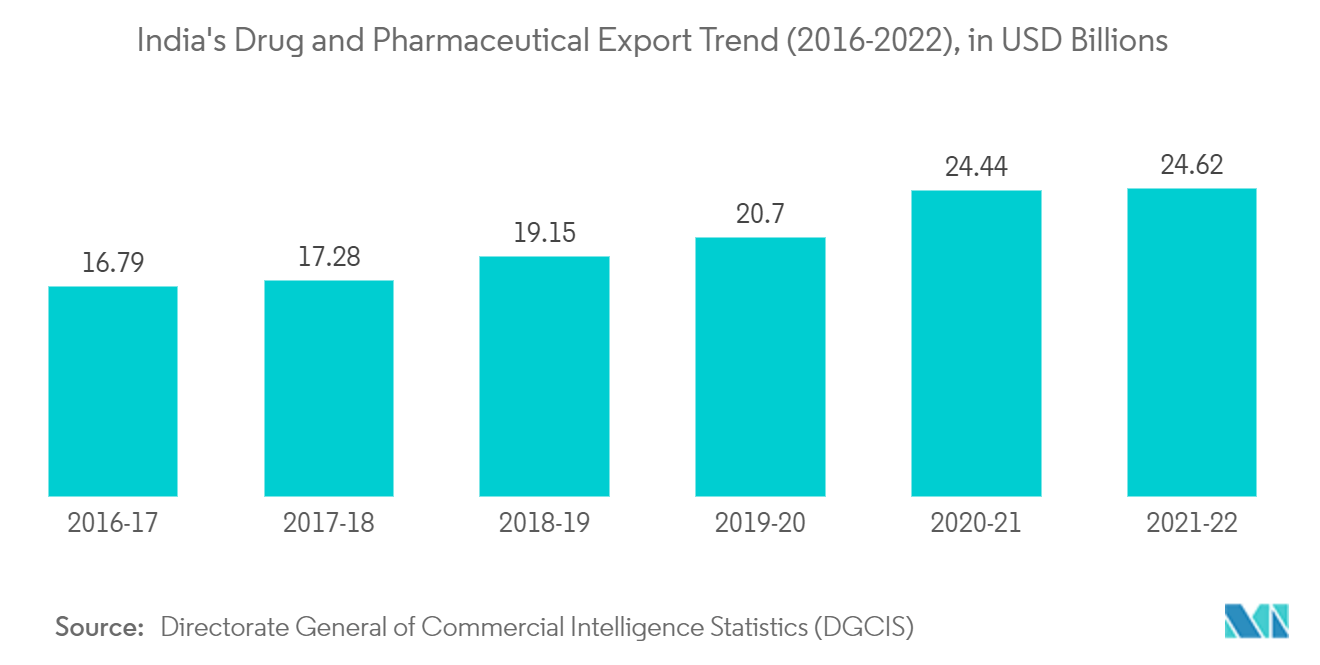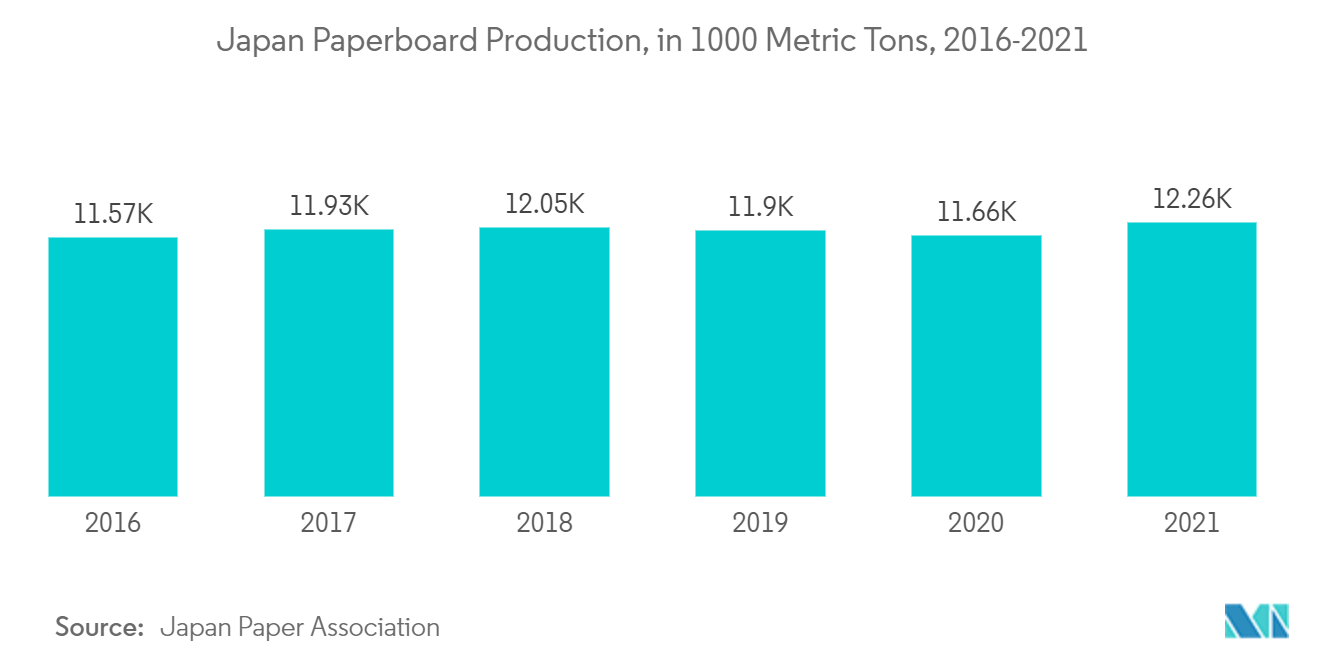Market Trends of Asia Pacific Contract Packaging Industry
This section covers the major market trends shaping the APAC Contract Packaging Market according to our research experts:
Pharmaceutical Sector is Observing Significant Growth
- Co-packaging allows vendors to adapt to variations specific to a dynamic market, like Pharmaceuticals. Production line flexibilities help companies prevent repackaging work, reduce working capital, and lower finished goods inventories.
- In the Asia-Pacific region, the Chinese Pharmaceutical market offers enormous opportunities as more and more people gain access to Traditional Chinese Medicine (TCM) and Western medicine, produced in huge volumes. For the same reason, China became the most significant market for high-speed blister packaging.
- While API manufacturing is typical in China, most of the country's CMOs are limited to manufacturing liquid or solid dosage formulations. It is expected to increase the demand for co-packaging services on primary, secondary, and tertiary levels, such as blister packaging, plastic containers, and labeling, among others, for major pharmaceutical companies in the country.
- India is currently witnessing an increase in demand for contract packaging due to the sudden surge in medication consumption and increased vaccine production from various pharmaceutical industries. In addition, the country is also known for being one of the largest producers of Ayurvedic and Homeopathic medicine and skincare.
- India is the world's No. 12 exporter of medical supplies. More than 200 nations worldwide receive Indian medications for export, with the US serving as the primary market. The country is the world's leading supplier of generic medicines, with 20% of global exports made up of generic drugs. In FY22 and FY21, Indian medication and pharmaceutical exports totaled USD 24.60 billion and USD 24.44 billion, respectively. In June last year, Indian pharmaceutical and medicine exports totaled USD 2,119.08 million.

Secondary Packaging is One of the Factor Driving the Market
- The increasing need for physical and barrier protection, secondary containment, adherence to regulations, and safety increased secondary packaging adoption. Standard secondary packaging includes cardboard cartons, cardboard boxes and cardboard/plastic crates, small inflatable air pillows, bubble wrap, loose-fill, and labels.
- As secondary packaging involves a packaging level within it, it is the secondary packaging that the consumer gets to see first, making it of prime importance. It is propelling the players in the industry to outsource the packaging that enables them to increase the product's attractiveness and henceforth attract customers. Thus, it boosts market growth over the forecast period.
- Globally, secondary contract packaging plays a vital role for pharmaceutical companies that want to focus solely on developing the drug. In such cases, the company employs packaging companies on a contract basis. It is likely to let them focus on the R&D of the product while the packaging duties of the product for transportation are outsourced.
- Secondary packs are often the first interaction with the brand consumers have, whether online, in-store, or at any point in between. Brands have associated themselves with a typical packaging type so that their products are identified on aisles.
- In the current packaging market scenario, outsourcing secondary packaging is becoming increasingly popular, owing to the rise of e-commerce and retailing. Thus, it aids manufacturers in undertaking large projects without needing extra workforce or machinery while also enabling the company to strengthen its distribution channels.


